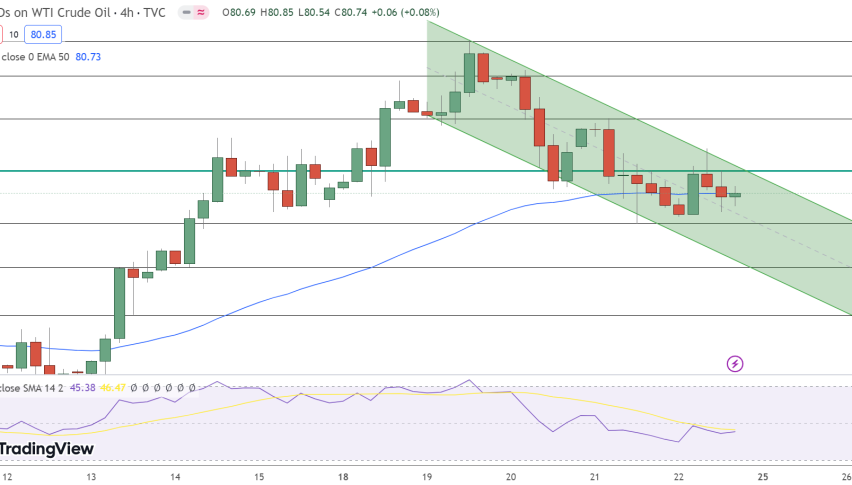Brent Crude is one of the key trading classifications of sweet light crude oil that works as a benchmark price for oil purchases worldwide. It is a light, sweet blend that can easily be refined into petrol (gasoline) and related products. However, the reason behind its lightness and sweetness could be associated with its low density and low sulfur content. It is worth mentioning that Brent oil has a sulfur content of about 0.37%, classifying it as sweet crude, but it is not sweeter than WTI. Another characteristic of Brent oil is that it is suitable for petrol and middle distillate production. It is typically refined in Northwest Europe.
Brent Crude was first discovered in the North Sea in the early 1960s. It is also known as London Brent, Brent Blend, and Brent Petroleum. Brent oil is one of the major global price benchmarks for Atlantic basin crude oils, used to price two-thirds of the world’s internationally traded crude oil supplies.
The Difference Between Brent Crude and West Texas Intermediate:
One of the leading differences between Brent Crude Oil and West Texas Intermediate Oil is that Brent Crude originates from oil fields in the North Sea, between the Shetland Islands and Norway, whereas West Texas Intermediate is pumped from oil fields in the US. As we have already mentioned, both Brent Crude and West Texas Intermediate are sweet and light, making them ideal for refining gasoline.
Brent Crude:
Brent Crude is more common, and most oil is priced using Brent Crude as the benchmark, as is the case with two-thirds of all oil pricing. Brent Crude is produced in the sea, so transportation costs are generally lower. Conversely, West Texas Intermediate originates in landlocked areas, making transportation costs more onerous.
West Texas Intermediate:
West Texas Intermediate is one of the preferred measure and pricing models in the United States. It is also slightly “sweeter” and “lighter” than Brent oil. The price of West Texas Intermediate (WTI) is slightly lower than the price of Brent. It is worth recalling that WTI was trading at $ 44.84 per barrel, while Brent was trading at $ 47.59 on November 26, 2020.
Current UKOIL Price: $
Major Factors that Influence Brent Oil:
There are three major factors that influence oil prices:
1: Supply
2: Demand
3: Geopolitics.
There are many factors that affect oil prices, but let’s take a look at how one of the most basic economic factors, namely supply and demand, impacts the Brent Crude Oil prices. The law of supply and demand states that if supply goes up, prices will go downward; conversely, if demand goes up, prices will increase.
Supply:
For many decades, the Organization of Petroleum Exporting Countries (OPEC) has been seen as the heart of the world’s oil trading platforms, with its oil-producing member nations working together to determine prices by increasing or reducing crude oil production. While OPEC’s control of the market has decreased compared to past years, its decisions continue to play a powerful role. It is also worth mentioning that OPEC’s every move is closely observed by governments, oil companies, investors, hedgers, speculator traders, policymakers and consumers.
However, OPEC’s policies are mainly affected by geopolitical factors. Some of the world’s top oil producers are politically weak or at odds with the West (issues about terrorism or compliance with international laws, in particular, have been problematic). Some of them have even faced penalties imposed by the US.
For example, in the past, supply disruptions, sparked by political events, have caused oil prices to shift drastically; the Iranian revolution, the Iran-Iraq war, Persian Gulf wars and Arab oil embargoes have been especially notable. The Asian financial crisis and the global economic crisis of 2007-2008 also caused fluctuations. Apart from this, the supply of oil is also affected by external factors, like weather patterns, production (E&P) costs and exploration, investments and innovations.
Demand:
Industrial production and strong economic growth tend to boost the oil demand, as can be seen from the changing demand patterns by non-OECD nations, which have grown sharply in recent years, according to the US Energy Information Administration. Across the pond, the factors that affect oil demand could also be associated with transportation (both commercial and personal), population growth and seasonal changes. For example, the oil demand tends to be underpinned during busy summer travel seasons and in winter, when more heating fuel is consumed


